- News
- Reviews
- Bikes
- Accessories
- Accessories - misc
- Computer mounts
- Bags
- Bar ends
- Bike bags & cases
- Bottle cages
- Bottles
- Cameras
- Car racks
- Child seats
- Computers
- Glasses
- GPS units
- Helmets
- Lights - front
- Lights - rear
- Lights - sets
- Locks
- Mirrors
- Mudguards
- Racks
- Pumps & CO2 inflators
- Puncture kits
- Reflectives
- Smart watches
- Stands and racks
- Trailers
- Clothing
- Components
- Bar tape & grips
- Bottom brackets
- Brake & gear cables
- Brake & STI levers
- Brake pads & spares
- Brakes
- Cassettes & freewheels
- Chains
- Chainsets & chainrings
- Derailleurs - front
- Derailleurs - rear
- Forks
- Gear levers & shifters
- Groupsets
- Handlebars & extensions
- Headsets
- Hubs
- Inner tubes
- Pedals
- Quick releases & skewers
- Saddles
- Seatposts
- Stems
- Wheels
- Tyres
- Health, fitness and nutrition
- Tools and workshop
- Miscellaneous
- Tubeless valves
- Buyers Guides
- Features
- Forum
- Recommends
- Podcast
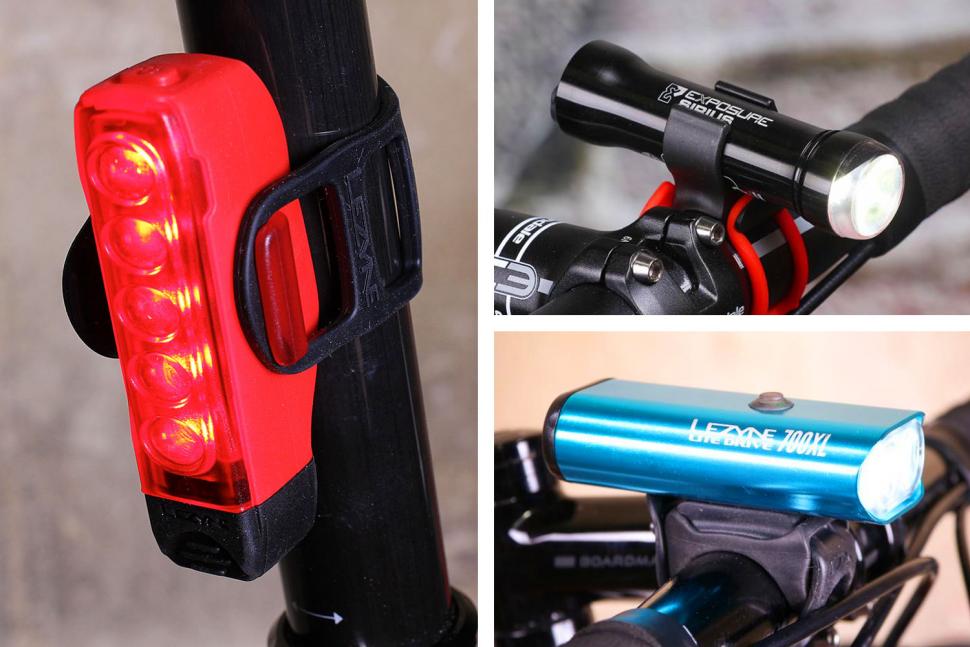 Should cyclists use daytime running lights Sept 2018
Should cyclists use daytime running lights Sept 2018Should cyclists use daytime running lights? Plus the best front and rear daytime cycling lights
You need front and rear lights for cycling in the dark, but do you also need to use lights in the daytime? We look at the argument for using lights during the daytime and round up a bunch of front and rear lights to consider if you do want to increase your visibility.
The best daytime running lights
- Lezyne Strip Drive Front — £29.49
- Magicshine Seemee 30 Combo — £24.99
- Giant Recon TL 200 rear light — £29.04
- Exposure Link Daybright — £55.96
- Blackburn DayBlazer 1100 — £55.99
- See.Sense Icon 2 rear light — £79.99
- Exposure Lights TraceR DayBright — £39.60
- Exposure Lights Sirius DayBright — £75
- Lezyne Strip Drive Pro 300 rear light — £52
- Lezyne Lite Drive 1000XL — £59.49
- Specialized Flux 900 Headlight — £69.99
- Bontrager Flare R City — £24
- Moon Comet-X front bike light — £15.75
It may not have escaped your attention that all new cars sold in the UK legally have to have daytime front lights. So should cyclists also be looking to boost their visibility when cycling in the daytime with front and rear lights? In a recent survey of 500 road.cc readers on Twitter, 52% said they do want daytime lights. It perhaps wasn't the result we were expecting.
Read more: The best front lights for cycling — beam comparison plus how-to-choose guide
To meet this demand, there are a growing number of bike brands marketing lights with daytime running modes, but what does this actually mean and are they any different to lights designed for nighttime cycling?
Exposure Lights has added a new Day Bright mode to its front and rear lights this winter. And it is more than just a flashing mode says Exposure’s Mark Swift. “The DayBright pulse pattern is the most noticeable to ensure it is recognised at distance on rural roads and also enable the light to cut through the noise of the urban town or city traffic and road distractions within daylight hours," he says.
“As the pulse pattern is not regular, once seen DayBright stays highlighted by the brain's receivers and ensures the cyclist is noticed,” adds Mark.
Why would a cyclist want to use lights during the daytime? Surely there’s no need when it’s light?
“Why not!” says Specialized’s William Watt. “Beyond smart responsible riding, visibility on the road is quite simply the most important investment a rider can make in their safety, particularly in a congested urban environment where every road user has a multitude of distractions. Daytime lights give the rider that extra layer of visibility on the road, particularly for that notorious black spot on the near side of traffic.”
It's not always bright and sunny during a typical UK winter day though. It’s often murky, drab and almost dark. Daytime lights can be used in these conditions says Exposure's Mark to help make cyclists stand out in changing light conditions and when “cycling in cities between building or country road in and out of tree cover where the sun cuts through the gaps but is then eclipsed by an obstacle the drivers eyes can sometimes not adjust fast enough. DayBright ensures the cyclist is spotted.”
It’s a stance that is backed up by See.Sense, a company that launched an intelligent daylight back in 2013 and every light since has had a daytime focus. “Daylight visibility has been really important to us right from the start,” the company tells road.cc. “When you consider that 80% of cycling accidents happen during the day, attracting attention to other road users as early as possible during these times is really quite crucial. Think about modern cars, they have their lights running almost any time you see them on the road. Why shouldn't it be the same, if not even more important for cyclists?”
That 80% figure that See.Sense refers to is based on evidence compiled by ROAP and you can read more facts and figures about the number of cyclists injured or killed in accidents here.
The argument for using daytime lights is starting to gather pace, but has anyone actually carried out a detailed survey to assess the impact of cyclists running daytime lights? Handily, just such a survey exists. It was conducted in Denmark in 2004/05 with 3,845 cyclists and concluded that those cyclists with permanent running lights recorded a 19% lower incident rate than a control group not using lights.
“The study shows that use of permanent bicycle running lights reduces the occurrence of multiparty accidents involving cyclists significantly,” the controlled experiment concluded. You can read that paper here.
So should we all start using daytime lights then? See.Sense recommends using flashing lights to help attract attention sooner. “When you have lights that flash brightly from both front and rear can help alert drivers sooner than a solid light, reducing risks out on the road,” the company tell us.
13 front and rear daytime lights
If you’re interested in daytime lights, here are a selection currently available in bike shops. There are loads more lights to consider in this buyers guide and don’t forget the beam comparison engine if you’re shopping for lights as well.
Lezyne Strip Drive Front — £29.49
The Lezyne Strip Drive 400 has been updated with a bright and really eye-catching day time flash, commendable battery life and faster charging. As with the old model, it's also fairly light, easy to operate, has loads of functions and is waterproof too. It's more of a be-seen rather than seeing light, though.
Read our review of the Lezyne Strip Drive Front
Magicshine Seemee 30 Combo — £24.99
The Magicshine Seemee 30 Combo is a set of 30 lumen LED lights aiming to get you seen. The slim profile means they easily attach to seat posts, seat stays, forks or handlebars, and features such as infrared ambient light sensors are rarely found at this price. They're easy to use, stuffed with useful features and very visible around town.
Read our review of the Magicshine Seemee 30 Combo
Giant Recon TL 200 rear light — £29.04
Giant's Recon TL 200 is an excellent rear light, offering lots of brightness, useful modes and decent run-times.
The Recon TL 200 is a bigger and brighter version of the TL 100. Which you choose comes down to personal preference, but for the extra tenner the 200 gets our vote for the extra brightness and run-time it offers.
Read our review of the Giant Recon TL 200
Exposure Link Daybright — £55.96
The Exposure Link Daybright is a secondary helmet light that adds 360-degree visibility and is great for being seen in heavy traffic. Designed and made in the UK, build quality is exceptional, it's very tough and run-times are reasonable bearing in mind its size and two LEDs.
Read our review of the Exposure Link Daybright
Blackburn DayBlazer 1100 — £55.99
The Blackburn Dayblazer 1100 front light is the biggest of the Dayblazer family. It's a beautifully made, five-function, compact torch type, capable of producing – surprise, surprise – 1100 lumens in its brightest setting, great for blasting along backroads, but with lower settings, pulsing and strobing for more built-up areas and for daylight running.
Read our review of the Blackburn DayBlazer 1100
See.Sense Icon 2 rear light — £79.99
The See.Sense was arguably the first smart light that used sensors to alter the brightness and speed of flash to suit different lighting conditions, as well as being able to detect car headlights. The light was so well received that it won the road.cc People’s Choice award in 2015 and they’ve since followed up with the 300 lumen Icon 2. You can read the review here.
Exposure Lights TraceR DayBright — £39.60
The TraceR is Exposure’s smallest and most affordable rear light with its new Day Bright mode. It has a 75-lumen rating with a three to 24 hour run time, weighs just 35g and has three brightness levels. Side visibility has been considered in the design of the light as well.
Exposure Lights Sirius DayBright — £75
If you want a bright and lightweight front light for commuting then the Sirius is a good option, with 575 lumens bright enough for most riding situations and a choice of seven modes, including the new DayBright. It’s easy to use and mount to the handlebars, with a tactile power button and battery gauge LED.
Lezyne Strip Drive Pro 300 rear light — £52
Lezyne has been producing lights with daytime visibility in mind for the past five years, intended to be brighter with unique flash patterns to be more visible to other road users up to 1 mile away. It offers 15 lights with a daytime flash mode, here are two contenders.
The Strip Drive 300 rear light, with its 300-lumen output, is one of the brightest lights on the market right now but there are 11 modes to choose from to suit all riding conditions. It packs a 100-lumen punch in the daytime mode, definitely ensuring you’ll boost your visibility.
Read our review of the Lezyne Strip Drive Pro 300
Lezyne Lite Drive 1000XL — £59.49
For front daytime lights, Lezyne offers the Lite Drive 1000XL. The small unit comprises two LEDs pumping out 1,000 lumens with a high-visibility daytime flash mode.
Read our review of the Lezyne Lite Drive 1000XL
Specialized Flux 900 Headlight — £69.99
Not to be left out, Specialized has developed the Flux 900 front light with two different LEDs with dedicated optics to provide the ideal beam pattern, and it also offers a daytime flash mode which reduces the lumen count to 300.
Bontrager Flare R City — £24
Bontrager was an early proponent of daytime lights and this Flare R City light is its smallest rear light. Despite its diminutive proportions, the light packs out 35 lumens from a single LED and offers up to five hours in the dedicated daytime flash mode.
Read our review of the Bontrager Flare R City
Bontrager has even had some of the Trek Factory Racer pros using daytime rear lights during the 2015 Tour de France prologue stage, but that marketing stunt aside we’ve not seen the lights in use since.
Moon Comet-X front bike light — £15.75
Moon offers two lights with a dedicated daytime flash mode, using a slow pulse that is designed to boost visibility as well as maximising battery runtime, with a claimed 23 hours in this mode. It’s small and light and at 120 lumens in the daytime mode plenty bright enough. There’s also a matching rear light
Read our review of the Moon Comet-X light
So daytime lights then, will you be investing or is the cynic in you thinking that the bike industry is just trying to sell more lights? Let us know in the comments section below.
Explore the complete archives of reviews of front lights and rear lights on road.cc
David worked on the road.cc tech team from 2012-2020. Previously he was editor of Bikemagic.com and before that staff writer at RCUK. He's a seasoned cyclist of all disciplines, from road to mountain biking, touring to cyclo-cross, he only wishes he had time to ride them all. He's mildly competitive, though he'll never admit it, and is a frequent road racer but is too lazy to do really well. He currently resides in the Cotswolds, and you can now find him over on his own YouTube channel David Arthur - Just Ride Bikes.
Latest Comments
- Destroyer666 13 min 35 sec ago
Nonono, not those, but those that have constructed Italian cars and motorcycles that have been driven to hundreds of race and championship...
- RoubaixCube 22 min 21 sec ago
This may well be the case although Im unaware of the brands popularity on their home turf. I used to see them being advertised more in the UK...
- qwerty360 52 min 51 sec ago
Arguably sticking it in a bank account is bad....
- Sredlums 1 hour 51 min ago
I'd counter that those brakes were in fact so inadequate that they eventually developed a whole new type of bicycle that was actually suited for it...
- levestane 1 hour 53 min ago
Unfortunately, Africa is heavily exploited both for resource extraction...
- CitizenSmith 2 hours 19 min ago
There seems to be no support for TOO) now - their email and website are defunct. They are inactive on Facebook. Aftter less than a year the rails...
- Pub bike 2 hours 25 min ago
"Bike theft hotspot"? This is just like having a sign that says "Police don't bother enforcing the law in this area. Thieves you have free reign!"
- Laz 3 hours 17 min ago
I used to daily 1hr sufferfests on indoor rollers, I drank a fair bit of water before during, and after- I noticed my sweat wasnt stinging in my...
- matthewn5 3 hours 49 min ago
I did the four windows on my Victorian flat. I replaced the parting beads (between the panes) and the staff moulds with new timber ones that have a...
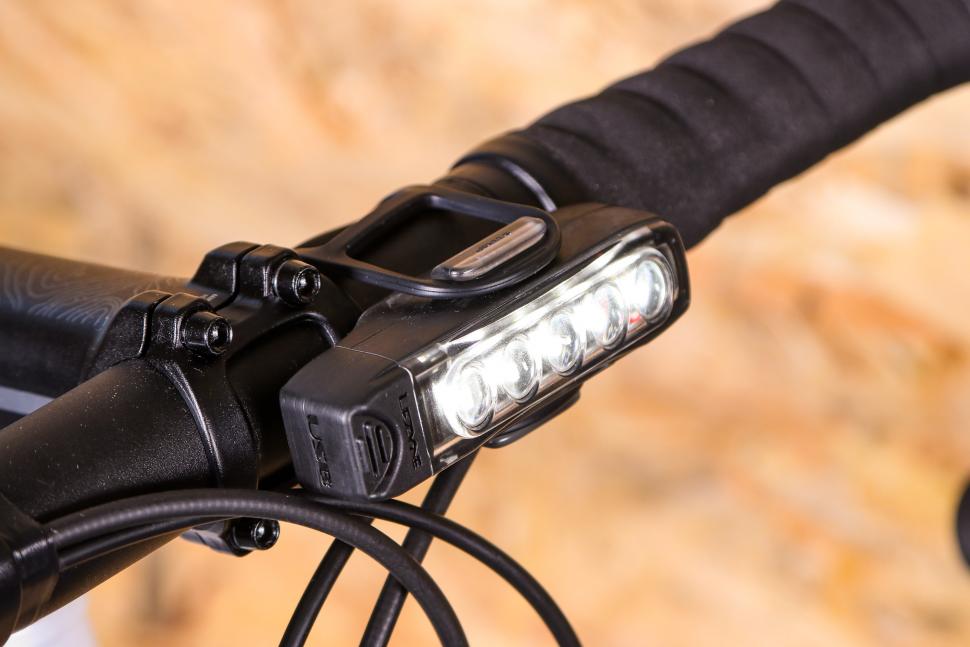

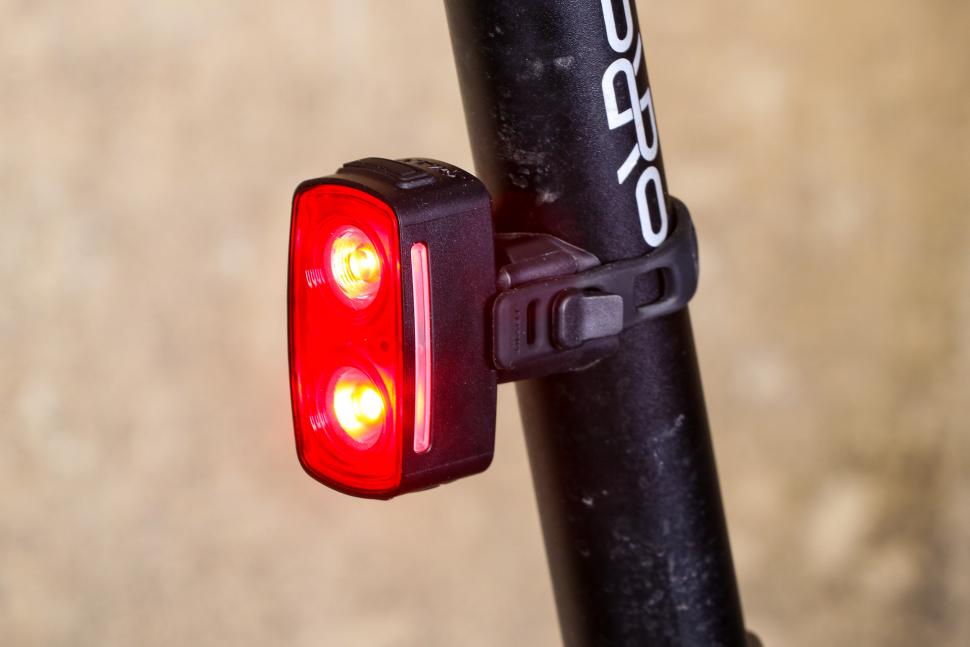

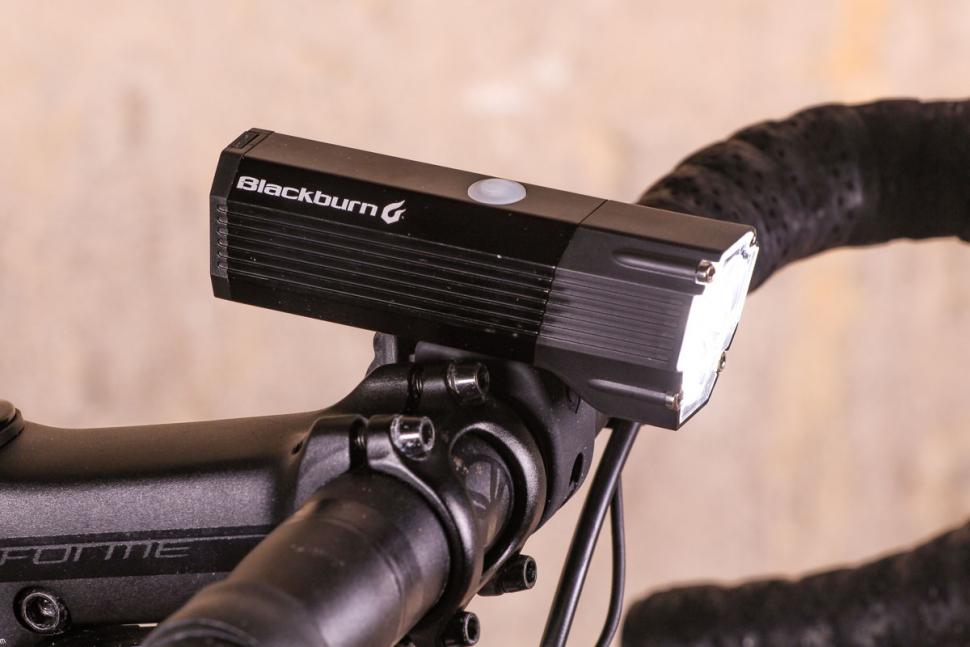
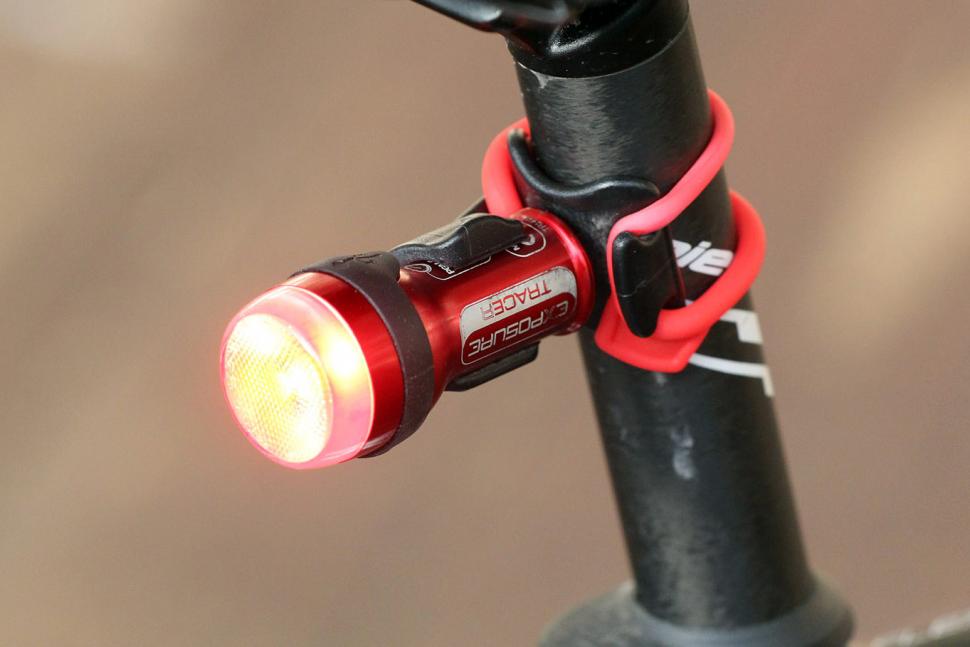

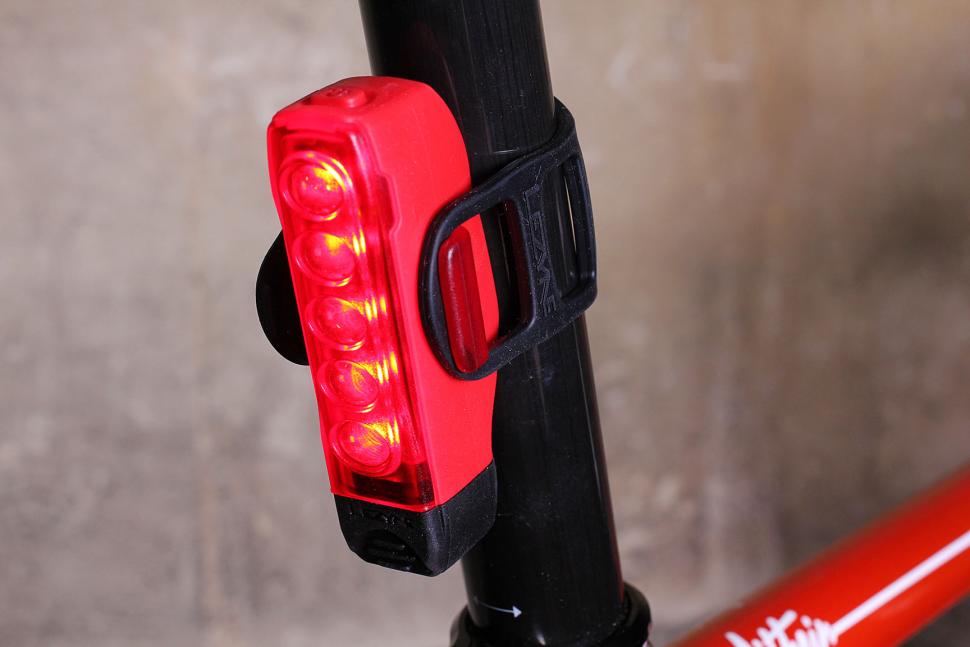
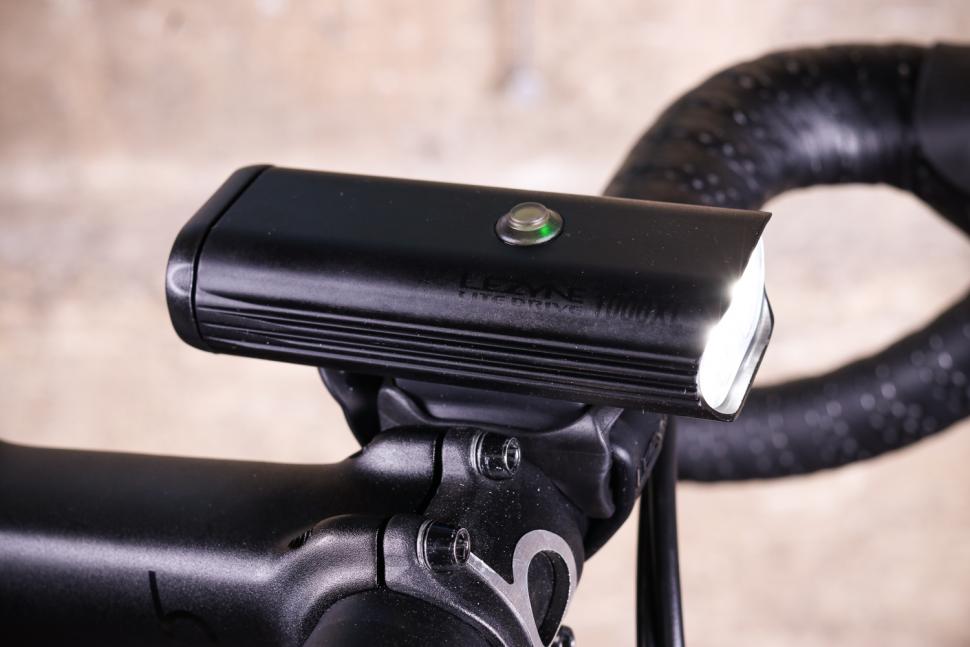
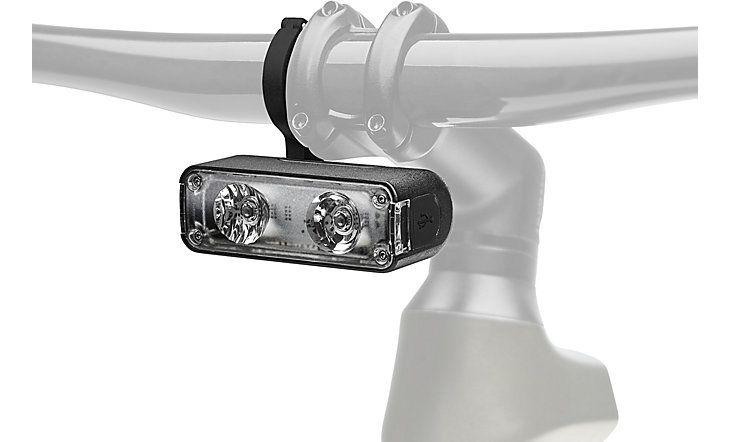
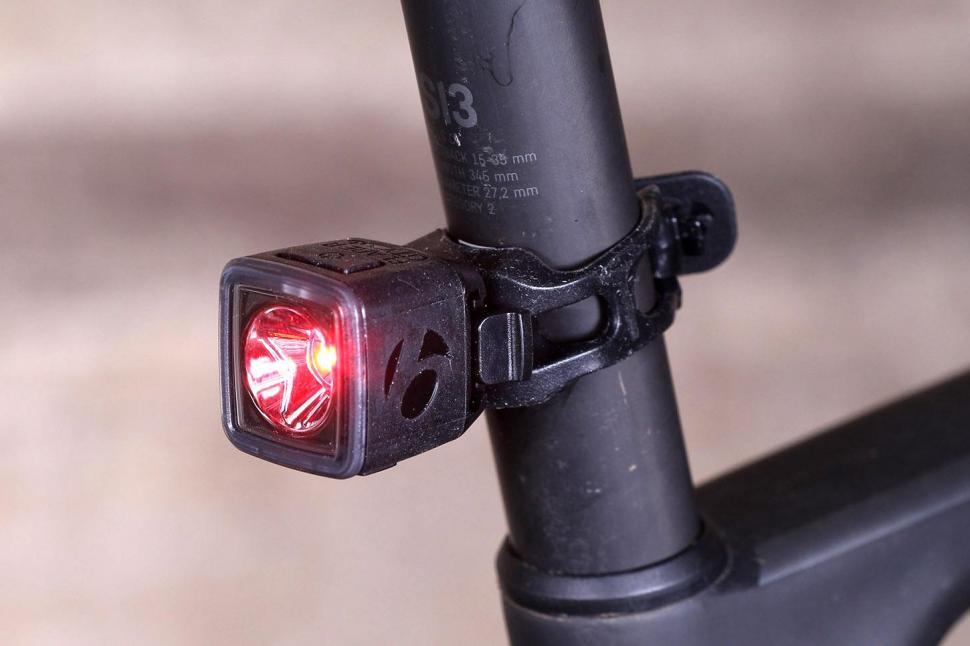
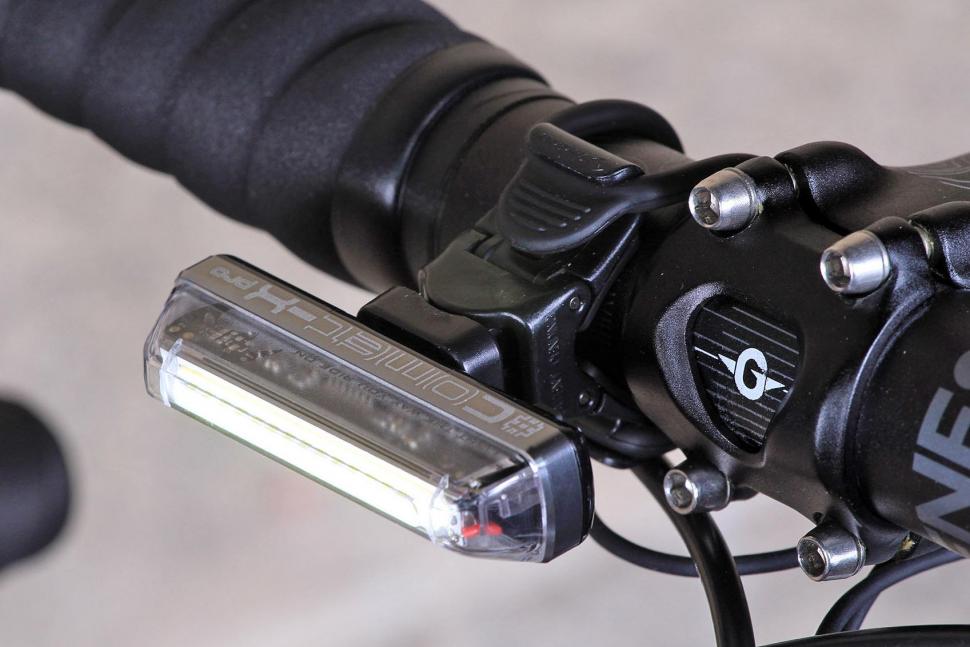
Add new comment
122 comments
Lezyne Strip Drive Pro 300 rear light
I have two. Excellent lights but VERY SHORT run time ;-(
Research says that flashing would be more noticeable - which is sort of the point - so i'm not sure that's a rational choice.
Mostly a crock of shit.
You even get the law incorrect in your opening salvo. Compulsory to fit, not to use.
The rest of your post is so full of lies and empty meaningless guff that has been covered elsewhere I can't be bothered to pick it apart.
You're just wrong
The vehicles are moving at roughly the same speed so it's easier to take care of things. They're 2x-5x the rate of bikes so that a different, say, field of vision and perspective. Except foe the dogs, your list is off road. Pleanty of dogs and other animals do get hit. Agree with the put- down- the list of things but that has little to do with the responsiblity of the rider to make him or herslf more easily seen. It seems you;re implying that the drivers have all the responsibilities and the cyclists have few or none.
whereas if an individual wants to have a pointless discussion that's not their choice, they need your approval...?
Randonneur, you are not just 'as a motorist'. You are a cyclist who also drives, or possibly a motorist who also cycles. You brain and thought processes are much more in tune with the visibility and vulnerability of cyclists.
There's been a number of threads covering the pros and cons of hi-viz (your bright cycle clothing). My take is the average motorist may not take anymore heed of a cyclist wearing hi-viz, than they would one wearing dark clothing, as the object they 'see' is not a danger to them sat in their one ton metal cage doing 30mph.
Many motorcyclists still wear black, they just also run with lights on. I wear mostly muted colours including a nice black rain jacket, but also use lights during daytime as I believe that motorists pay more attention. 'If it's got lights it's a vehicle'. However, as numerous 'close pass' vids show, there will always be some dangerous numpties who just don't get it.
Safe touring
P.S. Your hi-viz picnic is making me hungry and jealous at the same time!
Fair point, but from what I've read, the human brain fills in blind spots and constructs images based on what it expects to see rather than the detail of what it is actually seeing, hence cyclists on busy roundabouts and junctions are missed because drivers are expecting to see other vehicles.
Flashing lights seem something which force the brain to process an image and react. Also, how about situations in strong sunlight when you cycle through a densely wooded section... a rear light will mean a rider can be seen when otherwise they might not.
Yes, its a failing of drivers that can be resolved by them looking properly but its not a perfect world.
Sugru
I'm guessing you don't drive.
Thanks for the link, made me chuckle.
If only all those fluroescent yellow, reflective, illuminated bollards had been equipped with daytime running lights....
*no, I'm not being serious!*
I recall reading somewhere that although flashing lights are more noticeable/attention grabbing, they make distance evaluation more difficult. So, steady lights might be better in some circumstances (probably nighttime), but I'd go for flashing during the daytime. (I run 2 lights at night, one steady and one flashing).
Am I really?
Let's look at the UK Govt info page :
https://www.gov.uk/government/publications/daytime-running-lights/daytim...
Clearly stated right there : "automatically activate when the engine is started"
How is that optional usage? Soundsmandatory to me. Take any car since 2011 and tell me how to drive it with them off? Well?
Don't be an opionated armchair warrior troll, do some proper research and post facts with evidence.
All well and good, but why shift the onus onto the perfectly visible cyclist when surely the licensed motorist should only be driving according to the conditions and the limits of their vision?
Like I said, its not a perfect world, and I would argue a cyclist riding with no lights in dense woodland is not perfectly visible.
I would love for all drivers to be as vigilant and discplined as fighter pilots at all times, but that is never going to happen.
If you drive into dense woodland and can't see other traffic on the road, then maybe you should think about using your headlights, maybe?
I appreciate that drivers aren't as vigilant and disciplined as fighter pilots, but when the conditions change and you suddenly can't see anything, then either pay attention or pull over until you're not a danger to everyone.
They SHOULD be driving according to conditions, and most do - but there's still a number of idiots out there.
I've got the lights already. There's no cost for me to put them on in the daytime. I don't see a downside.
I agree there is little downside to using them, but every extra thing that becomes expected of a cyclist, is one more reason that people who don't cycle now will be put off starting, and that has wider implications for a society running out of space for single-occupant cars to get everyone where they need to go in good time, and one in which many would benefit from choosing to use active transport as an alternative.
Being expected (not even compelled) to wear a helmet and high vis and run lights at all times makes hopping into the car to pop down to the shop a mile away much more attractive than getting on your bike to do the same trip.
Excellent ...
... but I think I'll make my own decision, thank you.
Exposure make a saddle rail bracket
https://exposurelights.com/products/bike/saddle-rail-bracket
and also many other brackets for weird mounts
https://exposurelights.com/products/bike/brackets-and-mounts
Eh ? I don't think theres any link between lights in cars and aggressive driving ? Drivers drive like tw@ts sometimes and I've not noticed any correlation between that and lights.
I run them. Does nothing with aggressive drivers but helps dozy and drivers with bad eyesight to see me easier.
The number one reason people aren't getting on bikes isn't that they're being asked to buy kit, it's the perception that they might get hit by another vehicle. Until we get the secregated cycleways needed, surely anything that improves safety and the perception of safety is a good thing!
I've an aero seatpost and the SeeSense lights come with a sleeve thing that will work on that. I'd think it would work for you too ?
(double post, sorry)
No it isn't when it deters/discourages people from opting to commute by bicycle instead of by vehicle, & shifts the onus of responsibility from drivers onto the most vulnerable road users;
as well as distracting from the implementation of more effective measures such as segregagted cycle lanes.
So which is the greater proportion:
(a) people that don't cycle as they have safety concerns
(b) people that don't cycle because they feel they need additional kit
We won't get segregated infrastructure until more people cycle.
Simply pushing back that drivers need to be more careful is being unrealistic. Drivers have accidents with lots of things (not just cyclists) and no one wants to have an accident.
Be idealistic all you want, but the reality is that only getting more cyclists will mean more cycling infrastructure.
You have the psychology entirely wrong.
People don't cycle because they have safety concerns.
Making more kit obligatory won't reduce those concerns in any way. Rather it will send home the message that not only is cycling indeed dangerous, but that the responsibilty for keeping safe is on the cyclist and hence if you do get injured it will be your own fault.
The logical conclusion from that is that the most responsible thing to do, because the 'safest' is to not stop at getting more lights and kit, but to go the whole hog and get a car instead, the ultimate in safety kit.
Meanwhile, of course, drivers will also get the message that the responsibility for safety belongs to the potential victim, and will just stop looking in proportion to how much more lights and high-viz etc the cyclists wear.
At both ends you are sending the wrong message.
And if 'nobody wants to have an accident', can you explain why so many drivers _do_ have such accidents?
Again, your take on psychology is flawed. You don't just 'want' or 'not want' an accident in some sort of binary choice - you balance the risks and costs of having one against the benefits and costs of taking more effort to avoid having one.
*Clap, clap*
52% of people on road.cc are idiots. To be honest, I expected the figure to be higher.
Normalising lights during the day time, wearing space lemon yellow and allowing yourself to be forced into inadequate cycle lanes just gives more ammunition to those who don’t want cyclists on the road. Why do we in this country try to make cycling so difficult and such a niche thing to do?
Brexit gave you the same statistic expanded to the wider population!
This is a classic example of partial evidence. The Danish study showed 19% lower incident rate between the two groups of cyclists. However, that only tells part of the story;
I should point out that I haven't read the particular study, but if the reserach was done as a response to increased use of lights during the day (which seems likely) then a number of other factors need to be considered. For example;
1) Was the difference between the two groups because the use of lights resulted in a reduced risk to those using them or because more people using lights made those not less visible, thus increasing their risk? So, do increases in daytime use of lights result in a total reduction in incidents for cyclists (controlling for other factors)?
2) How is the the incident rate of other people in the environment not on bikes, e.g. pededtrians affected by daytime bike light usage, i.e. does making cyclists more visible make others less easy to spot?
3) How is the severity of incidents affected, e.g. if most cyclists become easier to spot, do drivers change their behaviour, e.g. speed up, because they expect to be able to easily notice cyclists resulting in perhaps fewer but more severe incidents?
4) Does promoting daylight light usage encourage the perception of cycling as dangerous and thus deter potential riders, resulting in negative mental and physical health impacts that would outweigh any benefits from daylight light usage?
5) Does promoting daylight light detract from a focus on tackling the real issues with encouraging cycle usage and rider safety thereby making it more likely that we will fail to take other measures that could have a bigger impact on rider safety?
..perhaps reading it would be a useful first move then ?
Edit. This is not intended to be confrontational or dismissive of your points, just a serious suggestion.
Pages